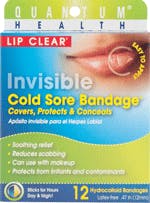A career opportunity inside the box
By Caitlin Dame, RDH and Alyshia McCormick, RDH
Expanding roles for dental hygienists are available within the government sector. A career working with inmates is one option for those seeking employment. Dental hygiene services are important for the inmate population, and dental hygienists play a vital role behind bars.
The inmate population is composed of high-risk individuals, meaning they have higher rates of infectious diseases compared with the general population, and are also less healthy.1,2 Inmates have a higher percentage of missing teeth, a higher mean of decayed surfaces, a higher prevalence of moderate and deep periodontal pockets, and a higher percentage of unmet dental needs.3 Overall, the inmate population's oral health care is generally poor; dental health problems are the second-most commonly reported health problem, following mental health.3 Prevention-oriented dental hygienists are crucial to this population. The vast majority of states and commonwealths have banned smoking indoors in prison; however, some still allow smoking outdoors and the option of smokeless tobacco.4 Through the utilization of tobacco cessation, inmates can get help to quit smoking or chewing tobacco for those individuals residing in states and commonwealths that have not yet completely banned tobacco products.4 Oral health education teaches the inmates the importance of proper self-care and vital instructions concerning how to properly clean their teeth. Dental hygienists can help prevent oral and systemic infections and disease advancement through the treatment of periodontal disease.5 Dental hygiene services can prevent chronic diseases and tooth loss, saving on high medical costs. Intra- and extraoral examinations can uncover the beginning stages of cancer, thus preventing expensive and extensive medical situations.
-------------------------------------------------------
Other articles to consider reading:
- Things I wish I had known 30 years ago
- Director's Message: Do you do it all, or delegate?
- Through my eyes: A tale of mentorship
-------------------------------------------------------
There are many different aspects to working behind bars with inmates. To get a more personal perspective, we interviewed a dental hygienist who worked at a federal penitentiary in Indiana. We were also able to explore the both the positive and potentially negative aspects through our own research. The positives to treating these clients include a sense of reward, perks of working for a government agency, job security, and knowledge of inmates' entire medical record.6,7,8
While working with inmates is not a volunteer position, it is considered a community service. Working with the underserved population aids open-mindedness and a better understanding of the underserved.6 Government jobs boast many benefits often not found in private practice, such as increased professional autonomy, retirement benefits, medical insurance, vacation days, sick days, and paid holidays. Our interviewee stated that the government was her employer, but out of respect and habit, she still viewed the dentist on staff as the head of the clinic. Many health-care professionals (HCPs) have found working in prisons to be a liberating experience due to unique professional opportunities: 90% of HCPs who work behind bars decide to make prison health care a career.7 Retirement benefits are available for those who have worked full-time for at least 20 years and are able to retire at age 50; employees with 25 years of experience may retire at any age.8 Employees are also offered medical insurance with the employee paying 28 to 49% of the cost, depending on the choice of insurance plans.8 Those working with inmates can earn up to 26 days of vacation per year (depending upon years of service), 13 sick days, and 10 paid federal holidays per year as well.8
Dental hygienists do not have to fear for their safety behind bars due to strict security measures.7 Health-care professionals are surrounded with prison guards and are given panic buttons to alert staff and send help if needed.7 Our interviewee claimed that she felt safe for the majority of her time working for a penitentiary; she always had a body alarm and was supervised by a prison guard through an observation window. She also stated that a major advantage was the ability to have the inmate's entire medical file, which allowed her to know everything from the medical history to the family history of the inmate she was treating.
Although working with inmates can be a positive experience, there are a few disadvantages when treating this population. There can also be a stigma from society and other professionals due to the association with dangerous inmates.9 Dental hygienists who work with inmates may be viewed as unsuccessful compared to counterparts.9 Conversation and rapport with inmates is limited due to strict guidelines to ensure personal safety. No personal information can be exchanged between provider and patient.7 Our interviewee did confirm this guideline. Because of the strict communication policy and inmates' backgrounds, our interviewee found it hard to establish trust with her patients. Another component of safety centers around dental instruments, which could be used as weapons if confiscated by inmates. Our interviewee explained there was a strict regimen of counting her instruments before and after every inmate was treated to ensure her safety and that of the security personnel.
Dental hygienists are becoming more important in the prison health-care setting due to the influx of inmates serving time due to drug offenses, according to the Federal Bureau of Prisons.8 As seen in the pie chart Inmate Offenses, 50% of prisoners in the United States are serving time due to drug offenses.8 Due to a large percentage of inmates who have drug related charges, many of them will have drug-induced oral effects. Methamphetamine is a well-known drug for its extensive oral effects. There is a high prevalence of previous meth users in all prisons and its use is rampant in the West, Midwest, and South.10 In addition to other negative oral health side effects, this potent drug causes xerostomia by stimulating the sympathetic nervous system and acts on the adrenergic receptors, causing reduced salivary flow.10 Marijuana, cocaine, and heroine all present with negative oral side effects as well.11 Most of the clients that our interviewee treated had oral evidence of meth use, and she claimed that the majority of the inmates who received care were in prison due to drug use or possession with intent to distribute charges.
The future of inmate health care is turning towards managed health-care services. Institutions are looking to budget health-care costs by outsourcing to managed health-care services because their goal is to create a more cost-effective system compared to the traditional fee-for-service system.2 One way of achieving this goal is through cost-cutting measures.2 Managed care companies encourage the use of preventive care as a means to reduce costs.2 A study found that approximately 26% of correctional departments reported that care was provided through managed care services.3 Our interviewee stated that correctional facilities that contracted their health care wanted dental hygienists with at least two years of experience, and federally employed dental hygienists are required to have a bachelor's degree. The demand for inmate health care is increasing with an influx of incarcerated individuals. This is due to the war on drugs. Incarcerating drug offenders is increasing the prison population, so prisons are allocating a greater proportion of space to house drug offenders.12 The rates of drug offenders is expected to increase between 60 to 70% between 2000 and 2020.12 Government is also changing the inmate health care as well. Many lawsuits concerning constitutional violations in prison health care are determined under the deliberate indifference standard, and have enacted new laws concerning prison health care.2
To also understand why dental hygienists are important for correctional facility care, one must be familiar with the laws. According to Standard 23-6.4, “each correctional agency should employ or contract with a sufficient number of qualified medical, dental, and mental health professionals at each correctional facility to render preventive, routine, urgent, and emergency health care in a timely manner consistent with accepted health care practice and standards.”13 As stated by Standard 23-6.2, “complaints of dental pain should be referred to a qualified dental professional and necessary treatment begun promptly.”13 “Routine preventive dental care and education about oral health should be provided for all inmates that are confined for over one year.”13
While working with the incarcerated population may be challenging, this career opportunity expands the employment field for dental hygienists outside of the traditional clinic setting. Working with inmates can be a beneficial and rewarding opportunity for both the dental hygienist and the inmate receiving care. Dental hygienists working with incarcerated individuals have the opportunity to make a difference by providing an underserved population with preventive care that is in high demand within this setting. As health-care professionals, dental hygienists continue to play a vital role in ensuring proper preventive care for inmates, and the government continues to provide an alternative place of employment for dental professionals.
Caitlin Dame, RDH, and Alyshia McCormick, RDH, are recent dental hygiene graduates from the University of Southern Indiana. They both strive to be active members of SADHA. They recently collaborated with the Community Action Program of Evansville, Indiana and Head Start to encourage teachers to incorporate oral health education lesson plans throughout the school year.
References
1. Iftene A, Manson A. Recent crime legislation and the challenge for prison health care. Canadian Medical Association Journal. 2013;185(10):886-9.
2. Robbins I. Managed health care in prisons as cruel and unusual punishment. Journal of Criminal Law & Criminology. 1999;90(1):195-237.
3. American Public Health Association. Improving the Oral Health of Prisoners to Improve Overall Health and Well-Being. NCBI. http://www.ncbi.nlm.nih.gov/pmc/articles/PMC1449416/. Access October 27, 2013.
4. American Nonsmokers' Rights Foundation. 100% Smokefree and Tobacco-Free Correctional Facilities. ANRF. http://www.no-smoke.org/pdf/100smokefreeprisons.pdf Accessed October 27, 2013.
5. Frisbee S, Chambers C, Frisbee J, Goodwill A, Crout R. Association between dental hygiene, cardiovascular disease risk factors and systemic inflammation in rural adults. Journal of Dental Hygiene. 2010;84(4):177-84.
6. Marsh L. Dental hygienist attitudes toward providing care for the underserved population. Journal of Dental Hygiene. 2012;86(4):315-22.
7.Daggett L. Correctional healthcare. Healthcare Traveler. 2012;19(12):28-31.
8.Federal Bureau of Prisons. Salary & Benefits. Federal Bureau of Prisons. An Agency of the U.S. Department of Justice. http://www.bop.gov/jobs/life_at_the_bop.jsp. Accessed October 27, 2013.
9. Smith S. Stepping Through the Looking Glass. American Nurses Association. http://www.aca.org/fileupload/177/prasannak/smith_web.pdf. Accessed October 27, 2013.
10. Heng C, Badner V, Schiop L. Meth Mouth. N Y State Dent J. 2008;74(5):50-1.
11. Better Health Channel. Teeth and Drug Use. Healthy Living. http://www.betterhealth.vic.gov.au/bhcv2/bhcarticles.nsf/pages/Teeth_and_drug_use. Accessed November 30, 2013.
12. Auerhahn K. California's Incarcerating Drug Offender Population, Yesterday, Today, and Tomorrow: Evaluating the War on Drugs and Proposition 36. J Drug Iss. 2004;34(1):95-120.
13. American Bar Association. Standards on Treatment of Prisoners. American Bar Association. http://www.americanbar.org/publications/criminal_justice_section_archive/crimjust_standards_treatmentprisoners.html#23-6.6. Accessed October 25, 2013.
Past RDH Issues







